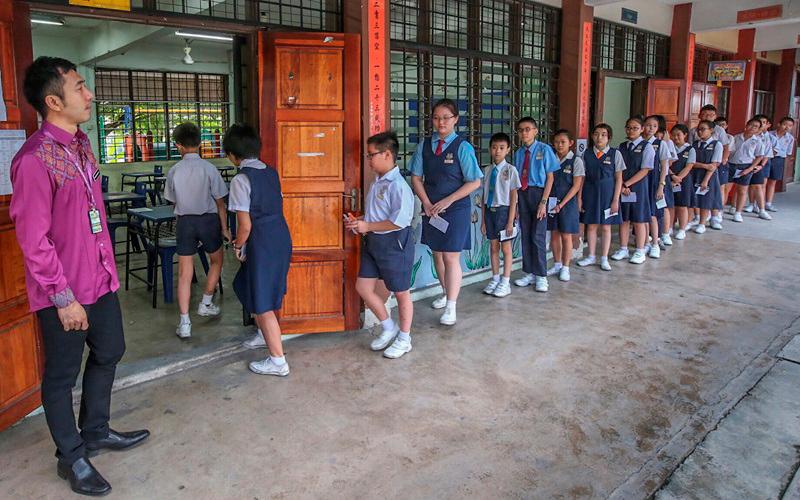THE new school year is about to begin. According to kwongwah.com.my, two Chinese primary schools - one each in Kedah and Perlis - have no new Chinese pupils, and have to rely on pupils from other ethnic groups to survive.
Among them, SJK (C) Kong Min in Tawar, Kuala Ketil, Kedah will see 13 Year One pupils - 12 Malays and one Indian.
As for SJK (C) Kong Aik in Mata Ayer, Perlis, 23 pupils, all of them non-Chinese, have enrolled for Year One.
The 2025/2026 academic year for Group A states of Johor, Kedah, Kelantan and Terengganu will begin on Feb 16 and end on Jan 10, 2026.
For the other states and federal territories, which are under Group B, the new school year runs from Feb 17 to Jan 11, 2026.
On Thursday, 12 of SJK (C) Kong Min’s new pupils attended its orientation session.
School committee chairman Xu Weizheng said the Year One intake this year was a big improvement from last year’s two.
“Last year, we had two: one Chinese and one pupil of Chinese-Malay mixed parentage.
“This year, we have 13 new pupils but none of them Chinese.”
He said taking into account seven pupils who left after completing Year six, the new intake has boosted the school’s population by six.
Giving a breakdown of the school population of 45 pupils, Xu said besides one Chinese, one Indian and one pupil of mixed Chinese and Malay heritage, the rest are Malays.
He said the young and able among the Chinese in Tawar have left for greener pasture elsewhere, leaving only their old folks behind, resulting in a serious shortage of Chinese pupils in the school.
The school now owes its survival to the support of non-Chinese in the district, he lamented.
Nevertheless, Kedah Dong Lian Hui (Association of Chinese school committees) president Zhuang Jun Long stressed that the school’s committee should remain steadfast in maintaining its characteristics as a Chinese school both in terms of syllabus and administration to ensure the Chinese culture is continually promoted and propagated.
He opined that other ethnic groups choose to send their children to Chinese school because they value the excellent Chinese culture of these school.
He said it is becoming a trend for under-enrolled Chinese primary schools to depend on the support non-Chinese communities for survival.
“Although many Chinese primary schools now rely on other ethnic groups to carry on, as long as school committees insist on maintaining these schools’ characteristics in teaching and inculcating cultural value, and to strive for excellence in imparting knowledge, the progress of these schools will not be affected.”
He said should it become necessary, these schools will adjust their teaching methods to suit the situation and needs, but it will not be done at the expense of their excellent Chinese culture.
Meanwhile, SJK (C) Kong Aik will see 23 new pupils when school starts on Monday.
Its principal Liang Yong Xiang said the number of Chinese enrolling at the school continues to drop over the years.
“There were five in 2023, but the number dropped to three last year. And this year, we have none at all.”
School committee chairman Lin Hui Chu said this phenomenon is closely linked to the population structure of Mata Ayer, a suburb of Kangar.
Due to the small number of local Chinese population and the high proportion of residents from other ethnic groups, Chinese pupils have gradually become the minority in Kong Aik, he explained.
Despite this, Lin stressed the school will stick to its aim of imparting Chinese education, insisting that Mandarin remains the medium of instruction and that all pupils must speak Mandarin in the school.
He opined that for as long as parents are willing to enrol their children at the school, it will not deviate from its objective of promoting and propagating Chinese education.









